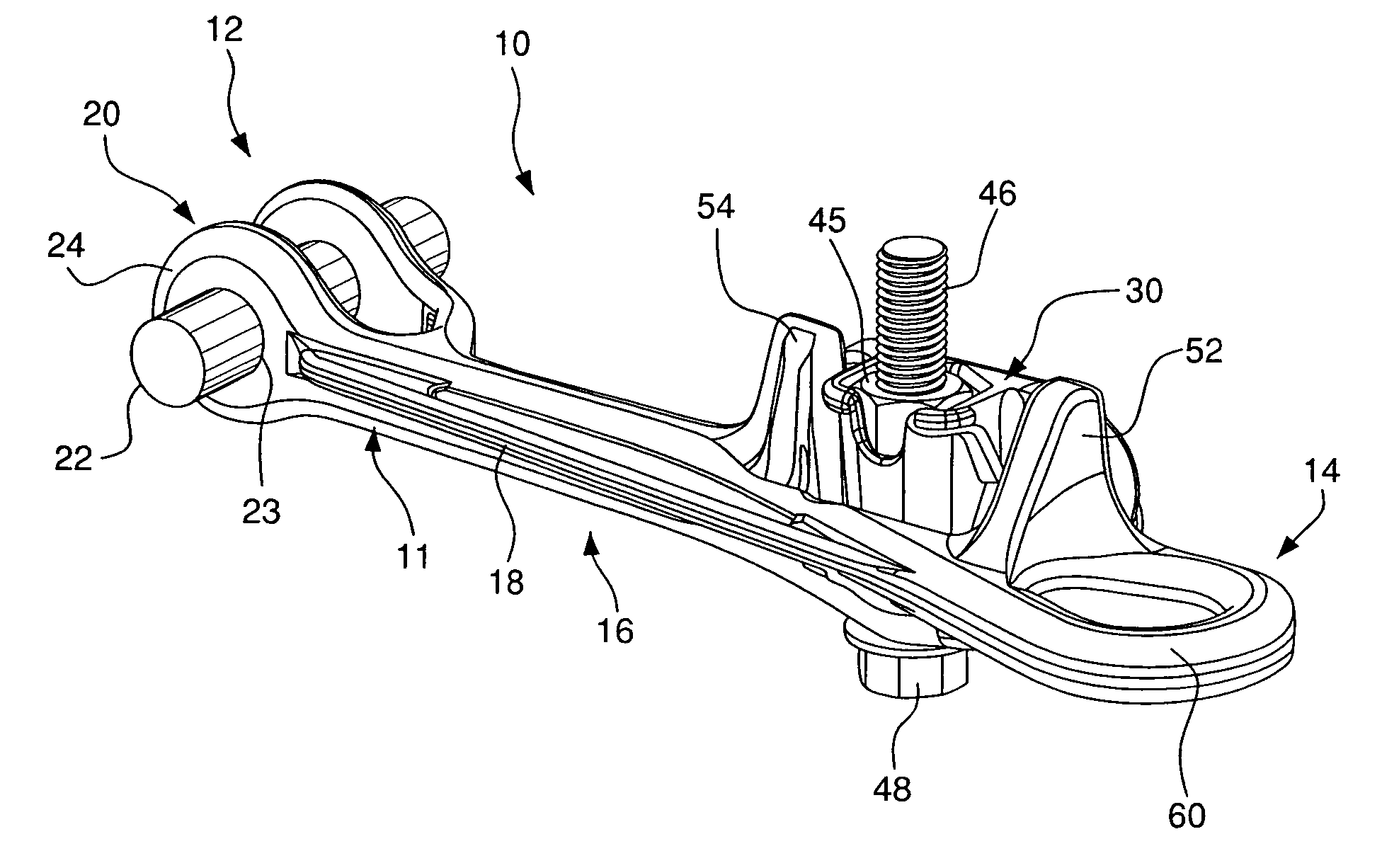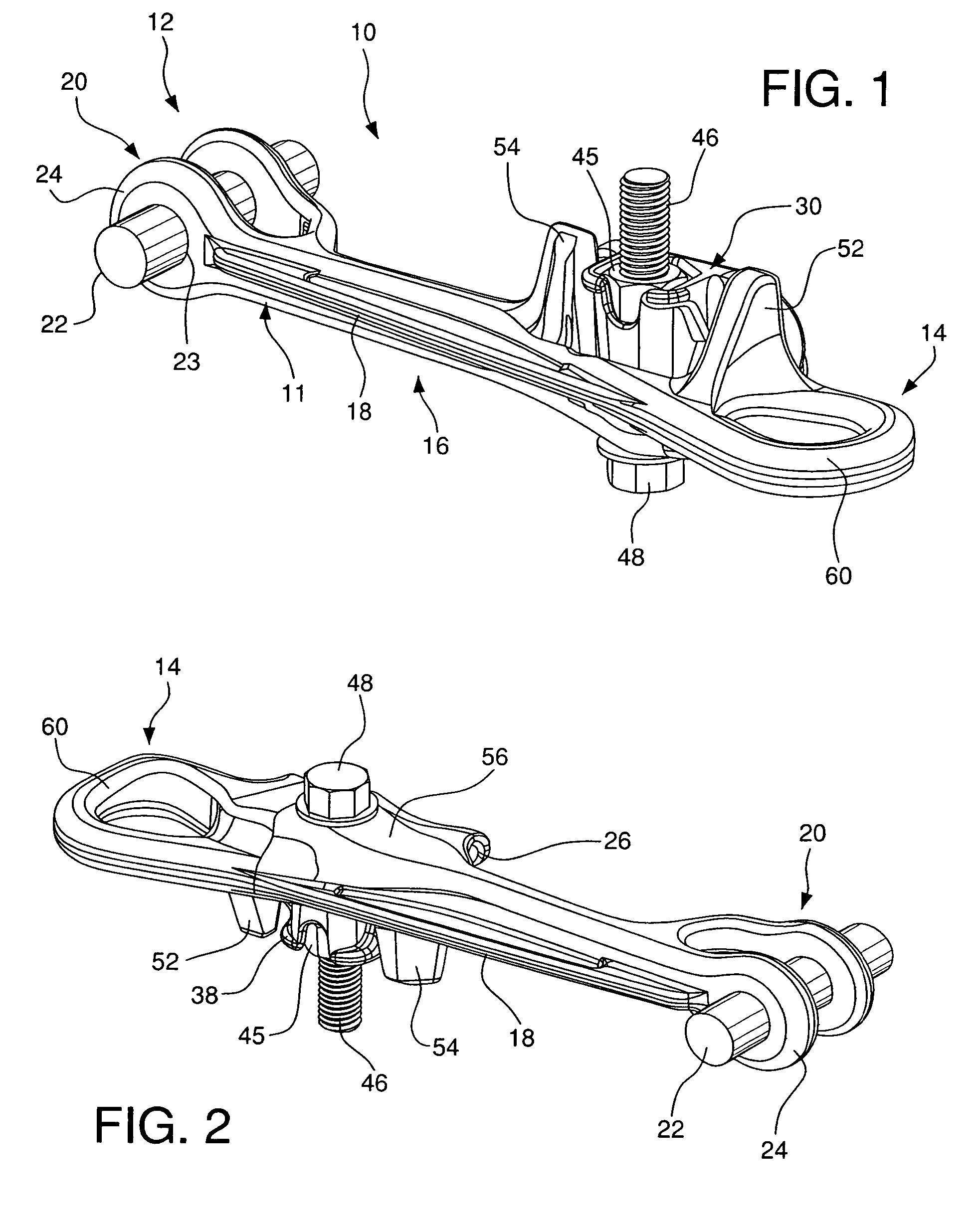Single bolt deadend anchor clamp
a single bolt and anchor technology, applied in the direction of scaffold accessories, furniture parts, machine supports, etc., can solve the problems of affecting the clamping effect, the difficulty of balancing on an aerial platform, and the dependence of the clamping
- Summary
- Abstract
- Description
- Claims
- Application Information
AI Technical Summary
Benefits of technology
Problems solved by technology
Method used
Image
Examples
Embodiment Construction
[0028]As seen in FIGS. 1-7, an anchor clamp 10 is illustrated for securing a cable. The anchor clamp 10 includes a main body 11 having a first end 12, a second end 14, a keeper 30 received in a pocket 50, and a biasing member 70 for counterbalancing a load between the keeper 30 and the retaining groove 26. A single bolt 46 received by the keeper 30 to attach the keeper 30 to the main body 11. The pocket 50 initiates a dynamic clamping action between the keeper 30 and the pocket 50 with the assistance of a biasing member 70 therebetween.
[0029]The anchor clamp 10 comprises a main body 11 defined by first end 12, opposing second end 14, and a middle section 16 extending therebetween. The first end 12 includes a clevis assembly 20 with a pin 22 threaded through coaxially aligned openings in a clevis bracket 24. The bracket 24 is substantially U-shaped for pivotal connection to a supporting structure (not shown). Each side of the bracket 24 is defined by a substantially circular shaped o...
PUM
 Login to View More
Login to View More Abstract
Description
Claims
Application Information
 Login to View More
Login to View More - R&D
- Intellectual Property
- Life Sciences
- Materials
- Tech Scout
- Unparalleled Data Quality
- Higher Quality Content
- 60% Fewer Hallucinations
Browse by: Latest US Patents, China's latest patents, Technical Efficacy Thesaurus, Application Domain, Technology Topic, Popular Technical Reports.
© 2025 PatSnap. All rights reserved.Legal|Privacy policy|Modern Slavery Act Transparency Statement|Sitemap|About US| Contact US: help@patsnap.com



